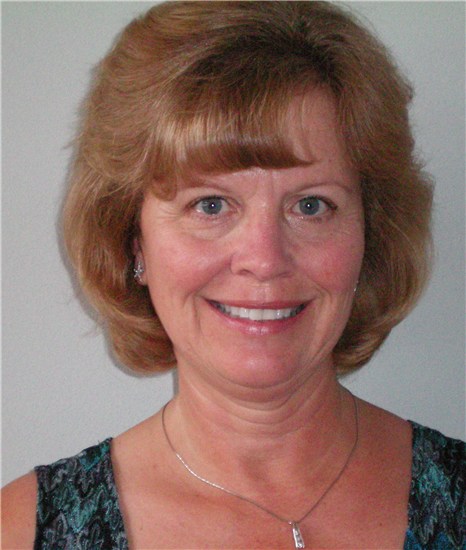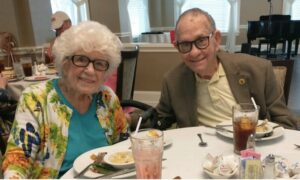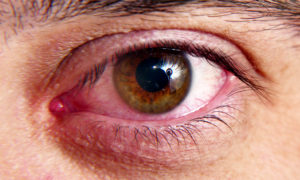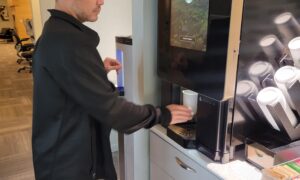By Diane Palombi, OD
When I was a student in optometry school, the optician who ran the dispensary once said to me: “You and Bill [another student] should open a geriatric practice together. Old people just love you.” I did not know at the time why I had achieved this honor. Now I would say the reason was that I had a lot of patience.
Some doctors I knew despised working with elderly patients. A Lenscrafter doctor once said she could not see giving senior discounts because senior patients they take so much longer to examine. I will admit that I allowed more time on the appointment book at my practice when I had to examine a senior citizen. I did not like to rush their exam because they do need more time. They respond slower. They move slower. They do not make quick decisions behind the phoropter and need to see the lens choices multiple times. They tend to have more eye health problems that need to be explained. However, if you plan well, a geriatric exam can go smoothly.
Your location is very important. Elderly patients often have canes, walkers and wheelchairs. If they are mobile without aids, they still don’t like walking long distances. My practice was a street-level storefront with direct access from the parking lot. In addition, I was fortunately located by two handicap ramps. Once the patient entered my office, I had a lower handicap accessible area at the reception desk. My hallways were wide and the travel distance between the reception/dispensary, pre-testing and exam room was very short. When a person moves slowly, the fewer steps the better.
I had adjustable tables in the pre-testing room so I could accommodate wheelchairs or the very short hunched over elderly person. My chairs were on rollers so they could easily be moved out of the way. The down side of rolling chairs is that you have to stabilize them for elderly patients. You do not want the chair to roll from under them as they are trying to sit down. Looking back now it might have been wiser to have a folding chair available for these patients. My exam lane had a wheelchair accessible ramp where I could pull back the exam chair. The patient did not have to get out of their wheelchair.
You would not normally think of this, but I often had to lower my voice to talk to the elderly. I usually have a high pitch, so I found that I was better heard if I talked lower. Talking slower was also necessary for some patients. You may have to talk louder for patients who are hard of hearing or having hearing aid issues. Some patients also read lips to help in communication, so you may have to keep your face visible at all times.
I also tried to talk in a soothing tone. As you get older more eye health issues occur. Seniors often are worried about going blind. Words like cataracts, glaucoma, diabetic retinopathy and macular degeneration can frighten them. I avoided the word cataract until vision was affected. I often said “lens opacities” for early stage cataracts. Patient education is important. Describing what is going on and the treatments available helps tremendously. I had a model eyeball that I found useful for explaining what was wrong with the patient’s eye and how cataract surgery was performed.
Some seniors are lonely and like to talk your ear off. I would give them some leeway, but tried to redirect the conversation back to their exam. My optician was very friendly, and talkative senior patients could get her backed up at times. Occasionally I would help out in the dispensary if I was free and she needed the help.
I always had a few senior-friendly frames in my dispensary. Some seniors do like the latest styles, but others love the same style they have worn for years or even decades. I always had some large metal men’s aviator frames with the double bridge and a few large women’s plastic frames. I may have not liked them personally, but they seemed to sell.
Elderly patients may not be able to stand for long periods of time, so my optician would bring frames over to them while they were seated if necessary. Seniors also liked my tint display. My lab had made me a white plastic painter’s pallet with lens blanks with tints mounted on it. They were removable so patients could hold the blanks over the display frame to see if they liked the color match. I occasionally sold the two-tone blue/ pink lens color to elderly women. We called it the eye shadow/blush tint. Some senior women felt it gave their face more color.
Seniors can be set in their ways. They often want glass lenses even though they are heavy and more dangerous than lenses made of other materials. You probably won’t talk them out of their trifocal into a progressive, and you probably shouldn’t.
Although senior patients can be challenging, they can also be rewarding. Just remember to schedule a little more time to exam them. And don’t forget: one day you are going to be that senior patient.
How does your office accommodate elderly patients? What changes or improvements are you considering making to your office to make treating the elderly easier?
Diane Palombi, OD, now-retired,owned Palombi Vision Center in Wentzville, Mo. To contact her: dlpod1@hotmail.com



























